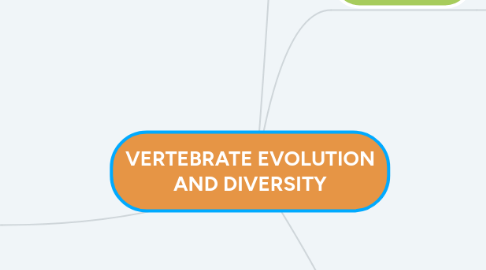
1. HUMAN ANCESTRY
1.1. Primates
1.1.1. Primate characteristics
1.1.1.1. Evolved from insect-eating mammals
1.1.1.2. Demand of living on tree
1.1.1.2.1. Limber shoulder joints
1.1.1.2.2. Eyes in front of the face
1.1.1.2.3. Excellent eye-hand coordination
1.1.1.2.4. Extensive parental care
1.1.2. 3 Groups of Primate
1.1.2.1. 1st
1.1.2.1.1. Lorises
1.1.2.1.2. Pottos
1.1.2.1.3. Lemurs
1.1.2.2. 2nd
1.1.2.2.1. Tarsiers
1.1.2.3. 3rd- anthropoids
1.1.2.3.1. Monkeys
1.1.2.3.2. Hominoid
1.1.2.3.3. Human
2. UNIQUE ENDOSKELETON
2.1. CRANIUM
2.2. BACKBONE
3. EVOLUTION OF TERRESTRIAL VERTEBRATE
3.1. Tetrapod - four legs
3.1.1. Amphibians
3.1.2. Reptilians
3.1.3. Mammals
4. CHORDATE
4.1. INVERTEBRATE
4.1.1. Lancelet - without cranium
4.1.2. Tunicates @ sea squirts -lack or cranium
4.1.3. Hagfishes - eel-like forms - have cranium
4.2. VERTEBRATE
4.2.1. Fishes
4.2.1.1. probably evolved during early Cambrian period about 542 mya
4.2.1.1.1. lack jaws
4.2.1.2. Divided to
4.2.1.2.1. CARTILOGENOUS FISHES
4.2.1.2.2. BONY FISHES
4.2.2. Amphibians
4.2.2.1. mixture of aquatic and terrestrial adaptations
4.2.2.2. 1st vertebrate to colonized land
4.2.3. Reptilians
4.2.3.1. Amniotes
4.2.3.1.1. produce amniotic eggs
4.2.3.2. Scaled, waterproof skin
4.2.3.3. eg: snakes, lizard, crocodile
4.2.3.4. Nonbird
4.2.3.4.1. Ectotherm - cold blooded
4.2.3.4.2. Can survive on less than 10% of calories that needed by birds or mammals
4.2.3.5. Diversified extensively during Mesozoic era
4.2.4. Birds
4.2.4.1. Said to be evolved from a lineage of small, two-legged dinosaur
4.2.4.2. Adaptations
4.2.4.2.1. Honeycombed bond
4.2.4.2.2. One instead of ovaries
4.2.4.2.3. A beak instead of teeth
4.2.4.2.4. Endotherms
4.2.4.2.5. Breast muscle anchored to a keel-like breastbone
4.2.5. Mammals
4.2.5.1. Terrestrial and aquatic
4.2.5.2. Hair, mammary glands
4.2.5.3. 3 major groups
4.2.5.3.1. Monotremes
4.2.5.3.2. Marsupiasl
4.2.5.3.3. Eutherians

